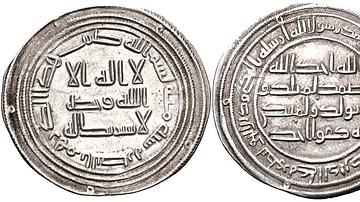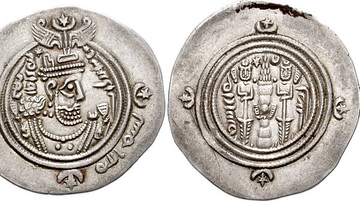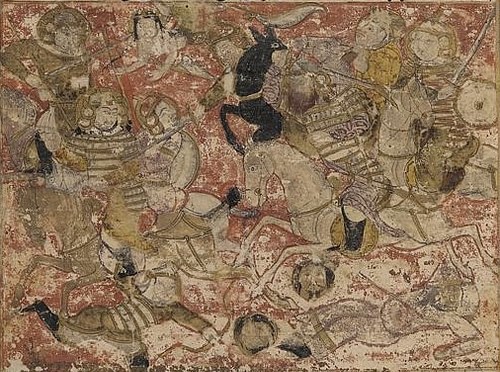
The First Fitna (656-661 CE) was the first civil war of the Islamic Empire fought between the fourth Rashidun Caliph, Ali ibn Abi Talib (656-661 CE), and the governor of Syria, Muawiya (later Muawiya I; r. 661-680 CE). Deep fissures divided the empire after the murder of the third caliph Uthman (r. 644-656 CE) in 656 CE. Uthman's cousin Muawiya, and several other prominent Muslims, demanded vengeance, and when Ali failed to comply owing to internal political ordeals, fighting broke out and hostilities lasted until Ali was murdered by a renegade group called the Kharijites ('those who leave').
Prelude
The Islamic Prophet Muhammad (l. 570-632 CE), in his mission as a messenger of Allah (God), united most of the Arabian Peninsula under the banner of a new faith: Islam. After he died in 632 CE, his close friend and confidant, Abu Bakr (r. 632-634 CE) took over his temporal position as the first caliph of the Rashidun Caliphate (632-661 CE; Rashidun meaning 'rightly guided'), as the first four are called by mainstream Sunni Muslims. The empire rapidly spread into neighboring lands of the Byzantine Empire and the Sassanian Empire; by 656 CE, the Muslims held dominion over all of Levant, Syria, Iraq, Khorasan, Egypt, a portion of the North African strip, and several islands of the Mediterranean.
This rapid expansion, however, was soon to be halted; the third caliph, Uthman had become quite unpopular by the end of his days. He had been facing accusations of nepotism, blasphemy, and mistreatment of some community members. Things took a turn for the worse when he dismissed Amr ibn al-As (l. c. 573-664 CE), the conqueror and governor of Egypt, from his office over charges of corruption. Amr sought the aid of Aisha (l. c. 613/614-678 CE), the youngest wife of Prophet Muhammad, who asked Uthman to reinstate Amr, saying that the will of the people of Egypt must be honored but the caliph did not bend.
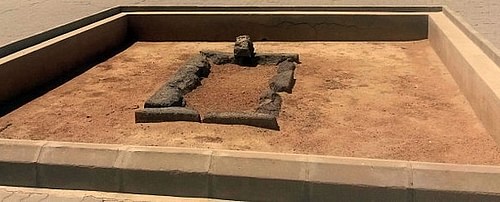
Caliph Ali Rises to Power
Medina was gripped by fear after the death of Uthman, and the renegades, seeking to safeguard themselves from the wrath of Muawiya, decided to raise Ali to the throne. Threatened by the rebels, the people of Medina persuaded the initially reluctant Ali to take the scepter. The new caliph, who according to a group of Muslims known as Shias (or Shii) was the only rightful heir to Muhammad, sought to re-establish central control over provinces and improve law and order (especially regarding corruption). He dismissed several provincial governors, most of whom had been set in place by Uthman and had hitherto enjoyed independence under his lenient rule. Many started defying Ali, and his strict anti-corruption stance created new enemies for him.
Uthman's kinsmen from the Umayya clan (later Umayyad Dynasty; 661-750 CE), especially Muawiya, demanded justice and refused to settle for anything less. While the political instability of the realm kept Ali from delivering justice to Uthman, as he would have himself faced an open rebellion, had he done so, other problems sprang up from every quarter. Talhah (l. c. 594-657 CE) and Zubayr (l. 594-656 CE), two notable early Muslims who had sworn fealty to Ali initially, retracted their support after he denied them the governorship of Kufa and Basra, two Iraqi garrison cities, respectively. Aisha also rose against Ali after he failed to avenge Uthman. The blood-stained shirt of the deceased caliph and the cut fingers of his wife were displayed publically in the mosque of Damascus, to spark a sentiment of honor and justice among people. Masses, numbering in thousands, flocked under the banner of the opposition; the risk of armed conflict became imminent.
Battle of the Camel
Seeking to avoid infighting, Ali opted for the diplomatic route to settle the matter peacefully, the parties, accompanied by their armies, met at Basra, in Iraq. Negotiations turned futile as neither side was willing to back down from their demands, and then the fighting commenced. Appalled at the sight of Muslims fighting their brothers in faith, Ali decided to end the fight prematurely. Noticing that Aisha was seated atop a camel, Ali sent a detachment of troops to capture her without harm, which they did, and upon seeing their leader captured, the opposition forces surrendered.
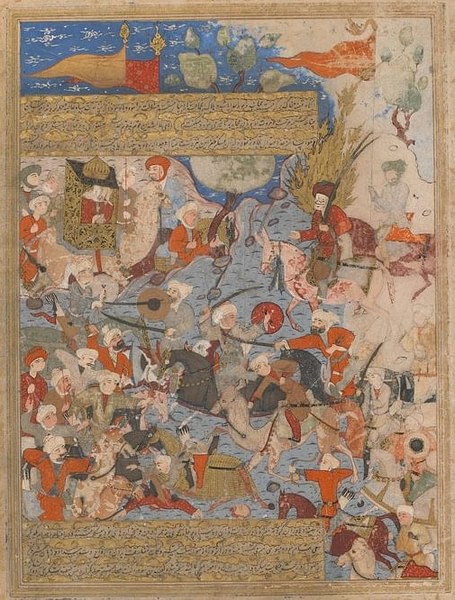
Battle of Siffin
The coalition of opposition was broken after their defeat near Basra, Muawiya, however, remained a thorn in Ali's path. The Syrian governor effectively used the sentiment of people regarding Uthman's death, to secure a huge following. Ali marched towards Syria to confront Muawiya, and the two forces clashed at a site called Siffin (657 CE). The fighting lasted for days and just as the Rashidun armies were about to overwhelm their foes, Amr, who had switched sides after Uthman's murder, suggested that Muawiya order his soldiers to hoist the pages of the Quran on their lances, which they did, symbolizing that they wished to solve matter via arbitration.
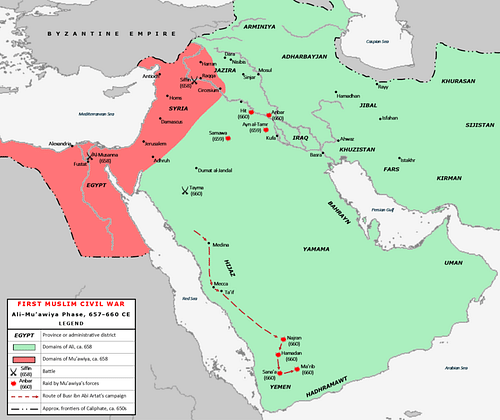
The settlement caused dissension among Ali's ranks, who felt that all of their efforts were in vain. Many began deserting him, and one such group of radical mindsets, known as Kharijites, declared that only a “sin-free” person could be the caliph and that “arbitration belongs to God alone”, meaning that they were hostile to both sides. The Kharijites faced the might of the caliph, who crushed them in the Battle of Nahrawan (659 CE), after which they resorted to underground tactics to pursue their motives.
Death of Caliph Ali & the End of the Fitna
Muawiya continued to oppose Ali and his influence grew to engulf Egypt, in addition to Levant and Syria, where he reinstated Amr as the governor. Caliph Ali, on the other hand, held dominion over Arabia and eastern provinces. Kufa remained the hub of Ali's support but it was here that he was destined to meet his end. Duly chastised in the field and unable to muster a force worthy of facing Ali in the open, the Kharijites dispatched assassins to eliminate competition.
Ali, Muawiya, and Amr were all targeted, however, only the first attempt succeeded. The Caliph was offering the dawn prayers in congregation when an assassin named Abd al-Rahman ibn 'Amr ibn Muljam struck him down with a poisoned sword. The caliph succumbed to his wounds and the poison rushing through his veins, after which his assassin was beheaded. With the death of Ali, the competition for power ended and the route for Muawiya lay open and he soon moved in to fill the void.
Aftermath & Conclusion
A Kharijite assassin attacked Muawiya but the governor survived with only a minor injury. As for Amr, he evaded the attempt owing to fate. The opposition leader had received oaths of allegiance in Jerusalem, by some accounts, during the lifetime of Ali, and after the caliph's death, he made his move. Muawiya forced Hasan, the eldest son of Ali, to abdicate the throne in his favor, but offered a huge pension to him and, if primary sources are to be trusted, treated him and his brother Husayn, with deep respect.
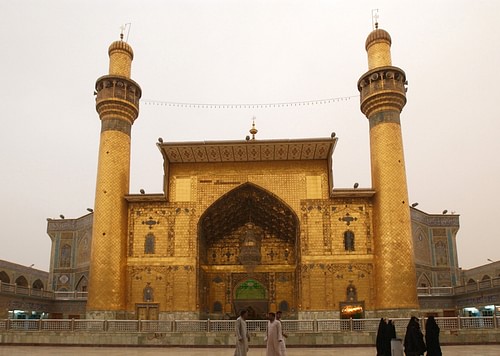
After Muawiya died in 680 CE, his son Yazid ascended the throne by his father's covenant, in violation of his pact with Hasan (that he would not appoint an heir), which Muawiya considered void after Hasan's death. Yazid's rise to power was met with severe opposition, and Husayn was among the most prominent people to offer resistance. Yazid, not willing to sacrifice his power, resolved on killing Husayn and his tiny band of followers en route to Kufa, from where they were supposed to gather their forces. The death of Husayn in the Battle of Karbala (680 CE), as it was later styled, sparked the Second Fitna which lasted for over a decade and ended with an attack on Mecca in 692 CE.





